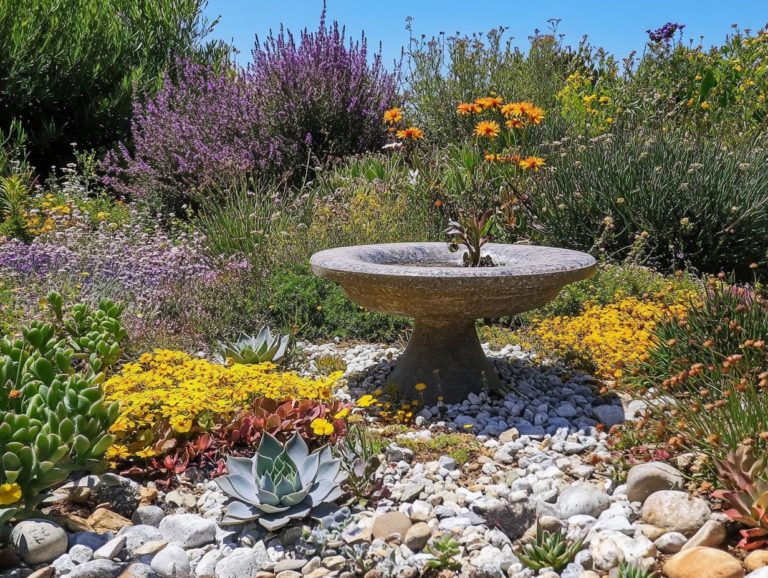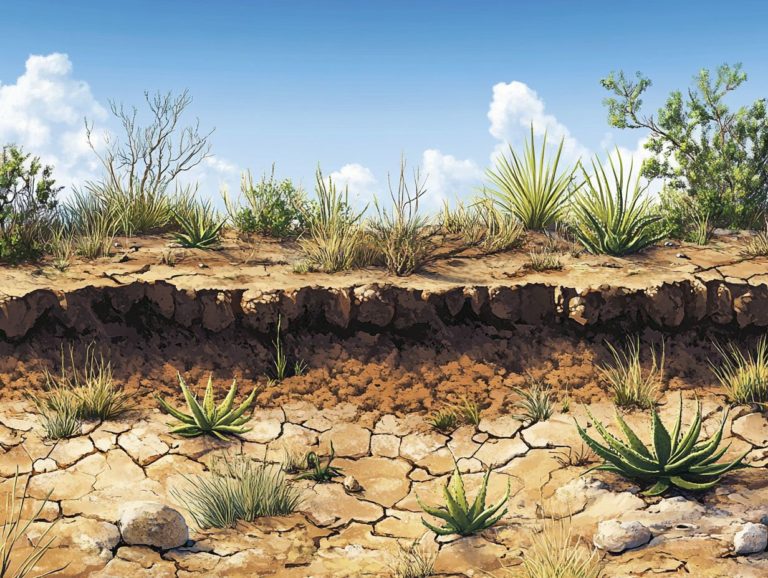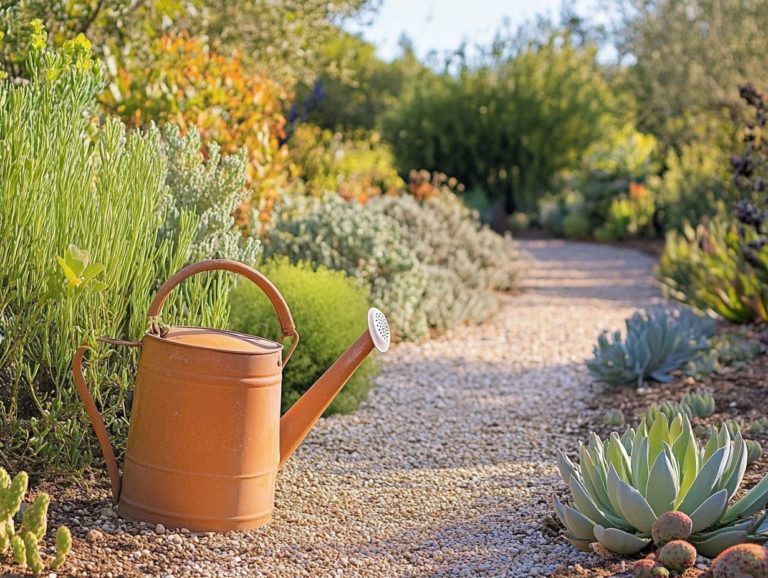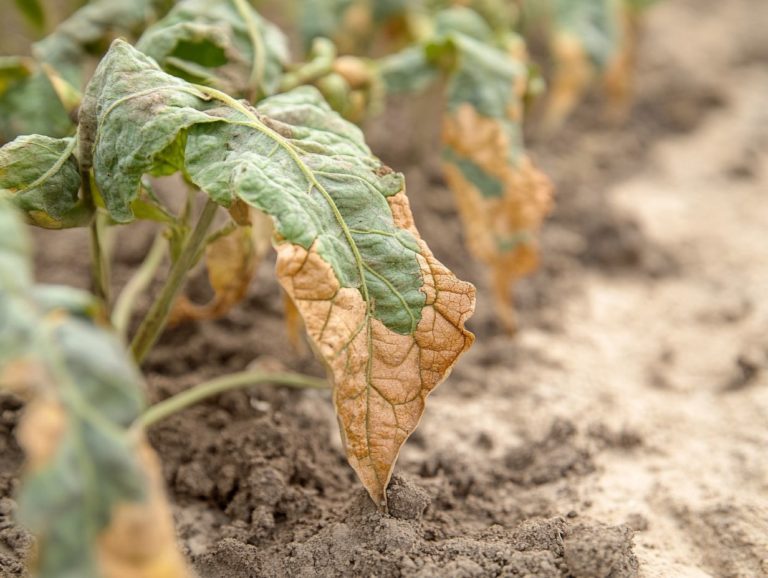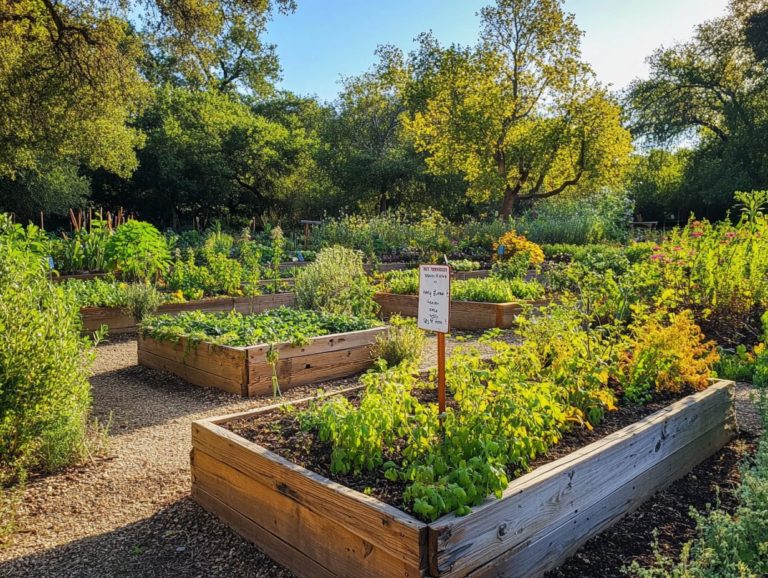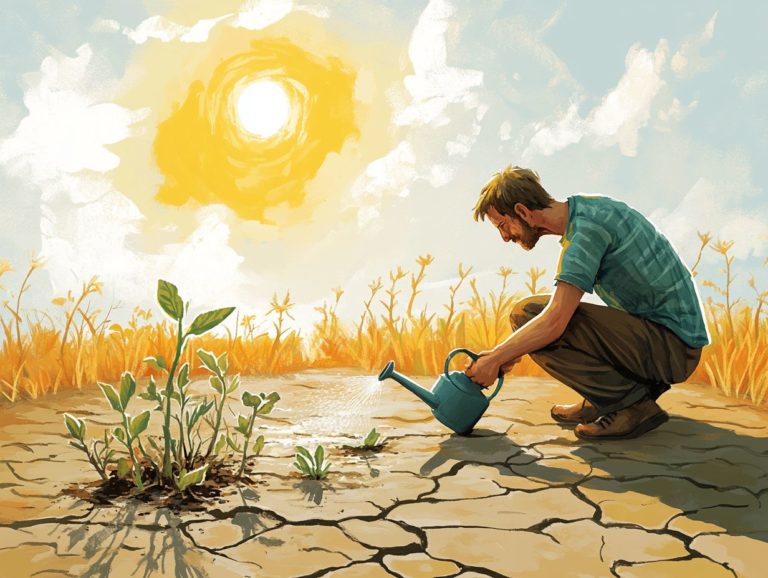What Are the Best Times to Plant Drought-Resistant Plants?
Drought-resistant plants are becoming increasingly essential in modern gardening, particularly as climate change escalates water scarcity. By selecting the right plants for your garden, you contribute to a more sustainable environment while enjoying significant cost savings.
This article explores the numerous benefits of resilient plants, including a drought-tolerant plants list, factors to consider when planning your garden, optimal planting times aligned with seasonal conditions, and expert tips for ensuring successful growth.
You ll also find recommendations for the top drought-resistant plants tailored to various regions, including Southern California, Nevada, and Utah. Prepare to transform your dry garden into a thriving, resilient oasis!
Contents
- Key Takeaways:
- Benefits of Planting Drought-Resistant Plants
- Factors to Consider when Choosing Planting Times
- Best Times to Plant Drought-Resistant Plants
- Tips for Successful Planting
- Recommended Drought-Resistant Plants
- Frequently Asked Questions
- What Are the Best Times to Plant Drought-Resistant Plants?
- Why is it important to plant drought-resistant plants at certain times?
- Can I plant drought-resistant plants during the summer?
- Are there specific timeframes for planting drought-resistant plants in different regions?
- Do drought-resistant plants need special care when planted at specific times?
- Can I plant drought-resistant plants year-round?
Key Takeaways:
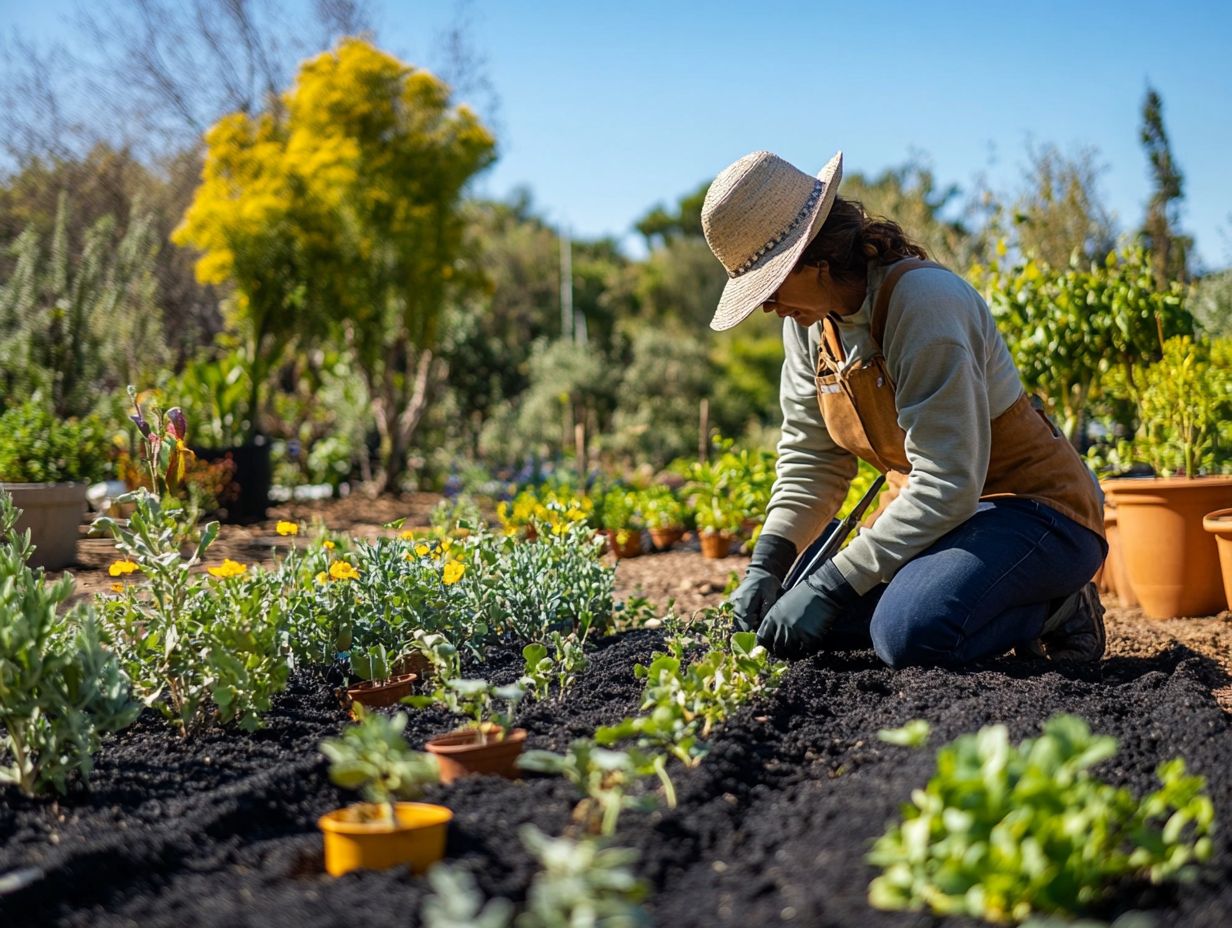
- Drought-resistant plants thrive in arid conditions, making them perfect for a low-maintenance garden that saves money on watering costs.
- The best time to plant drought-resistant plants depends on your specific climate and soil conditions.
- Proper care and maintenance are essential for the successful growth of drought-resistant plants.
What are Drought-Resistant Plants?
Drought-resistant plants, often referred to as drought-tolerant plants, are specifically adapted to flourish in dry conditions. They make an excellent choice for sustainable gardening in regions like Southern California, Nevada, and Utah, where water scarcity poses significant challenges.
These remarkable plants employ various adaptations, such as deep root systems and thick leaves, which minimize water loss while maximizing nutrient uptake. Their role in low-water landscaping is crucial; they create beautiful green spaces that require less maintenance and contribute to environmental sustainability.
Take, for instance, Phlomis fruticosa, with its silvery leaves and vibrant yellow blooms. It adds aesthetic charm while enriching the soil. Similarly, the striking Euphorbia showcases eye-catching foliage alongside its drought resistance, while California poppies bring a burst of seasonal color.
Together, these plants enhance soil health through effective conditioning and support a sustainable ecosystem, making them invaluable allies in the fight against water scarcity.
Benefits of Planting Drought-Resistant Plants
Start planting drought-resistant plants now and unlock a world of advantages, especially in regions grappling with water scarcity. These resilient varieties significantly reduce water consumption, allowing you to maintain a thriving garden with minimal effort, even under harsh conditions.
By choosing drought-tolerant species, you can create landscapes that conserve water and enhance the ecosystem. This approach offers a sustainable solution to the pressing challenges of climate change and dwindling resources, enabling you to garden with both purpose and elegance.
Environmental and Cost Savings
One of the primary advantages of incorporating drought-resistant plants into your landscape is their significant contribution to environmental sustainability, along with remarkable cost savings in water conservation. By reducing the water needed for landscaping, you can allocate resources more efficiently while fostering a healthier ecosystem.
These resilient plants thrive in dry conditions and provide vital habitats and food sources for local wildlife. Integrating native plants enhances biodiversity, as they attract pollinators like bees and butterflies crucial for maintaining healthy ecosystems.
Drought-tolerant vegetation also improves soil quality by promoting deeper root systems, which can reduce erosion and enhance water absorption, leading to minimized runoff. Homeowners can save up to 50% on their water bills simply by transitioning to these sustainable landscapes.
With lower maintenance demands, these plants require fewer chemical inputs and resources, making them a wise investment for both personal and environmental health.
Factors to Consider when Choosing Planting Times
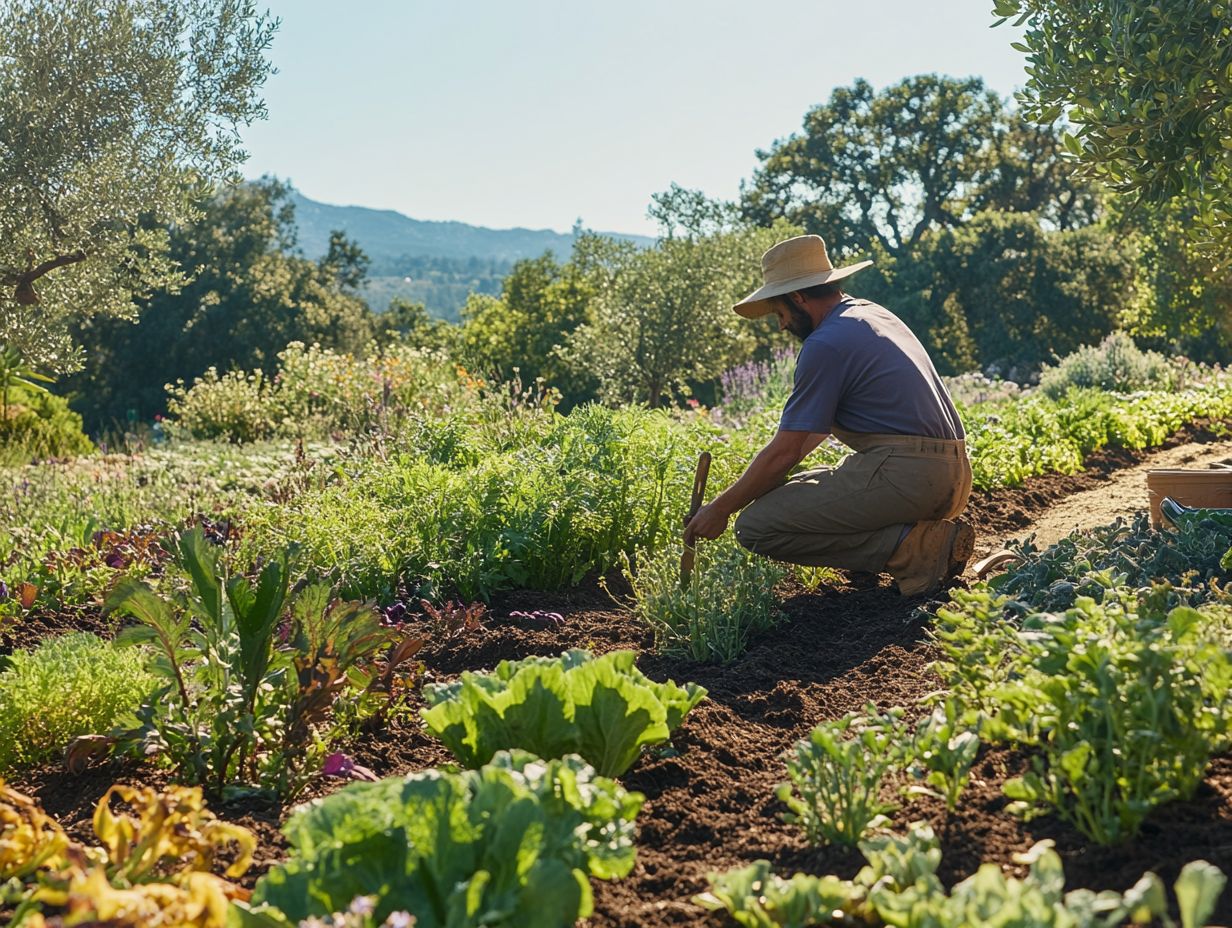
When you’re planning to plant drought-resistant plants, it’s crucial to take into account a range of factors that influence the best planting times. Consider local climate conditions, soil quality, and the specific needs of the most resilient drought-resistant plants you selected for your garden.
By understanding these elements, you can craft a strategic planting schedule that not only guarantees the success of your low-maintenance garden but also harmonizes beautifully with the surrounding environment, especially if you consider seasonal nuances.
Climate and Soil Conditions
Understanding the climate and soil conditions is essential when you re selecting drought-resistant plants for a garden that truly flourishes. Different species have unique adaptations that make them well-suited for specific environments and soil types.
For example, you’ll find that plants like Ratibida columnifera thrive in sandy soils, while others may prefer clay-like substrates. This highlights the importance of proper soil conditioning to support their growth.
Analyzing local temperature ranges and rainfall patterns will greatly influence your plant selection. In areas with high heat and low humidity, choose native succulents or cacti. On the other hand, regions that experience occasional rainfall can support deeper-rooted perennials.
To ensure that your chosen plants thrive, soil testing is critical. It reveals the pH and nutrient levels, guiding you on necessary amendments to boost fertility and improve water retention. Crafting a tailored watering schedule that adapts to seasonal weather changes will optimize moisture availability, reducing water waste while enhancing plant resilience against drought.
By taking these factors into account, you can create a vibrant, sustainable landscape that stands the test of time, showcasing the beauty of drought-resistant plants.
Best Times to Plant Drought-Resistant Plants
Determining the ideal times to plant drought-resistant plants is largely influenced by regional climate patterns and seasonal nuances, which can vary significantly across areas such as California, Nevada, and Utah. By grasping the optimal planting windows, you not only promote robust growth of these resilient plants but also lay the foundation for a thriving, low-maintenance garden. Understanding why choose drought-resistant plants ensures your garden can endure drought conditions with grace and ease.
Seasonal Considerations
Imagine planting in the fall! It gives roots time to establish before the summer heat hits, while spring planting aligns perfectly with seasonal rainfall patterns.
It’s equally crucial for you to understand how temperature fluctuations and sunlight exposure vary throughout the year. For example, the warmer temperatures in spring stimulate active growth, making it an ideal moment for sowing drought-resistant varieties. On the flip side, summer can unleash harsh conditions, prompting you to implement protective measures against sun exposure and temperature extremes.
When you consider factors like rainfall intensity and duration, timing your planting is crucial for success! This way, you can ensure that these resilient species capitalize on natural moisture while being well-equipped to endure dry spells.
Employing mulching techniques in winter not only insulates the soil but also fosters healthier roots, further supporting drought-resistant gardening practices.
Start planning your garden today for a vibrant, drought-resistant landscape!
Tips for Successful Planting
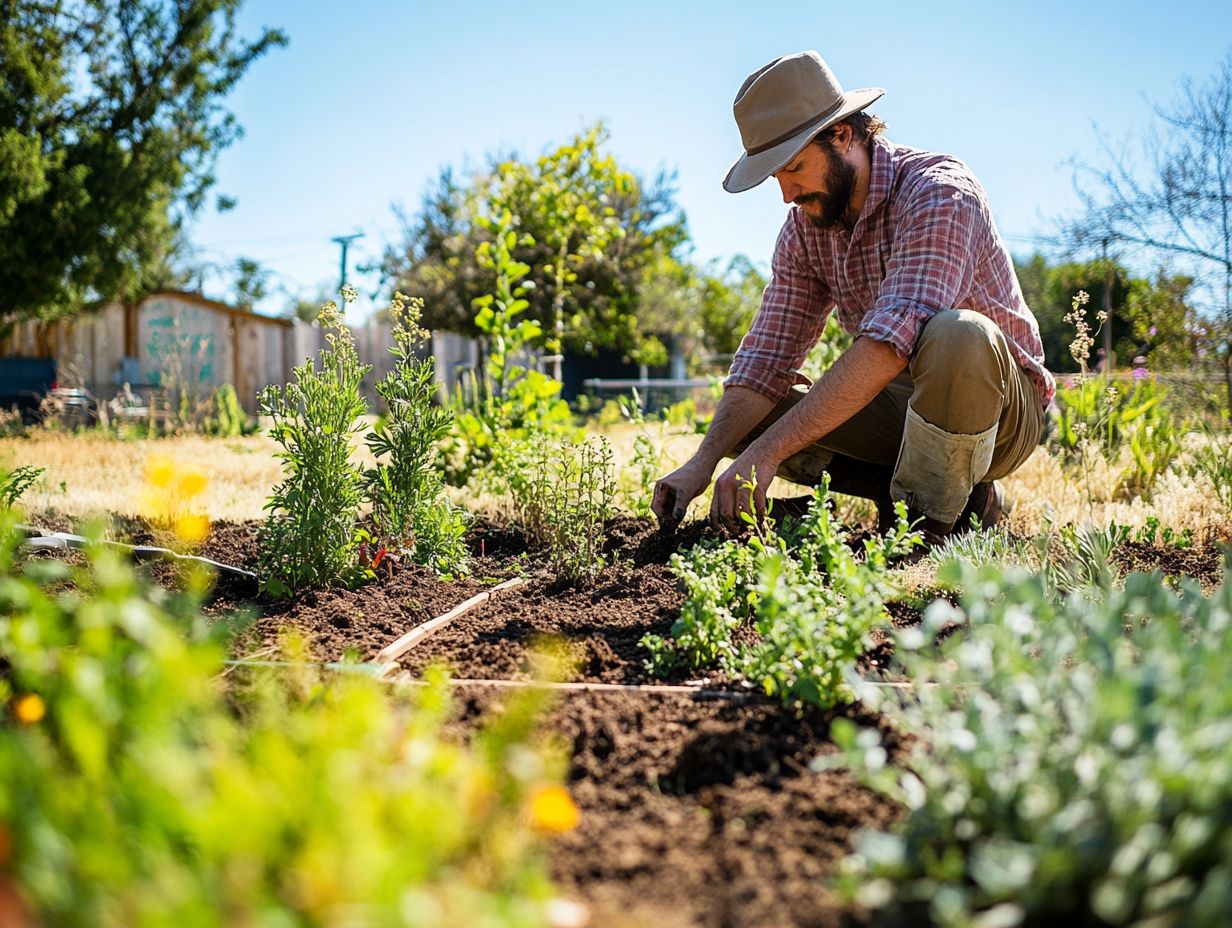
For successful drought-tolerant gardening, it s essential to implement specific strategies for effective planting and care. Focus on maintaining drought-resistant plants throughout their growth cycle.
Techniques like deep watering and establishing a consistent watering schedule promote robust root systems and ensure long-term survival, especially during the critical initial establishment phase. Prioritize these practices to create a thriving garden that flourishes even in dry conditions.
Proper Care and Maintenance
Caring for drought-tolerant plants requires effective watering schedules and a keen understanding of each species’ needs. This approach paves the way for long-term success.
Monitor your plants health regularly and adopt thoughtful irrigation practices to enhance their resilience against drought conditions.
Utilizing efficient watering techniques, such as deep soaking and drip irrigation (a method that delivers water directly to the roots), ensures moisture reaches the roots without unnecessary waste.
It’s equally important to watch for pests; even drought-resistant varieties can attract certain insects during dry spells. Implement a balanced approach to pest management, including natural repellents, to safeguard your plants’ vitality.
Make seasonal adjustments, like mulching and modifying watering frequency based on rainfall, to further contribute to optimal growth while protecting against environmental changes.
Adapting your care regimens to the plants’ evolving requirements will reinforce their health and longevity, allowing them to thrive in challenging conditions.
Recommended Drought-Resistant Plants
Selecting the right drought-resistant plants elevates both the aesthetic allure and sustainability of your garden. With a variety of species suited to different climates and soil conditions, you have numerous options at your fingertips.
A thoughtfully curated list of drought-tolerant plants could feature vibrant choices such as:
- California poppies
- Buddleja spp.
- Mahonia aquifolium
This selection ensures your landscape thrives beautifully, even in low-water environments, creating a stunning and resilient outdoor space. Explore these plants to create your dream garden!
Top Choices for Different Regions
When selecting drought-resistant plants, consider regional varieties that thrive in your specific climate, whether you’re in Southern California, Kansas, Nevada, or Utah. Each area boasts unique environmental conditions that favor particular species, helping you create a flourishing garden that requires minimal water and maintenance.
In Southern California, you might lean towards succulents like agave and yucca, which feature stunning architectural forms and adapt beautifully to the coastal climate.
If you find yourself in Kansas, with hot summers and chilly winters, you ll appreciate native grasses like little bluestem and vibrant wildflowers such as black-eyed Susans, both of which bring lively colors to your landscape while conserving precious water.
In Nevada and Utah, water-efficient landscaping thrives, where resilient plants like desert sage and ground-hugging sedums can flourish, crafting visually captivating spaces without extensive watering. Mix these plants to cultivate a low-maintenance oasis that offers visual interest throughout the seasons.
Frequently Asked Questions
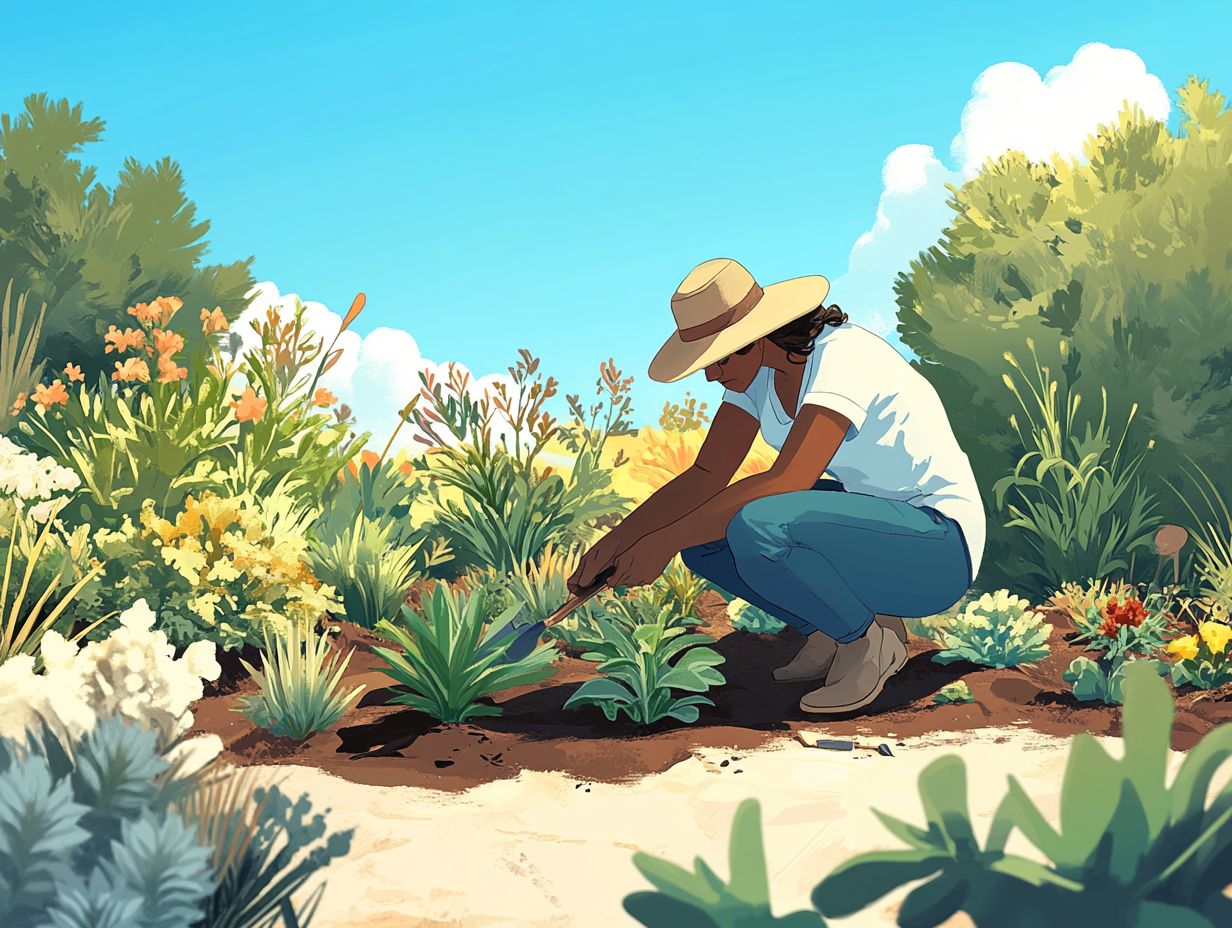
What Are the Best Times to Plant Drought-Resistant Plants?
The best times to plant drought-resistant plants are typically in early spring or fall, when the weather is cooler and there is more moisture in the soil. For more information, check out the best seasonal care for drought plants.
Why is it important to plant drought-resistant plants at certain times?
Planting during the recommended times allows plants to establish strong root systems before the harsh summer heat or winter frost sets in, increasing their chances of survival.
Can I plant drought-resistant plants during the summer?
You can plant drought-resistant plants in summer. Just make sure to water them regularly until they are growing well, and consider learning about the lifespan of drought-resistant plants to ensure their long-term health.
Are there specific timeframes for planting drought-resistant plants in different regions?
The best times to plant drought-resistant plants vary by region. For optimal care, it’s also important to know when to water drought-resistant plants. Research local planting times to give your plants the best chance to thrive.
Do drought-resistant plants need special care when planted at specific times?
These plants may need extra care during extreme weather. For example, water them more in hot summers or cover them during frost in winter.
Can I plant drought-resistant plants year-round?
It’s possible to plant these plants year-round. For the best success, follow the ideal planting times. In milder climates, with proper care, planting can be done anytime!

